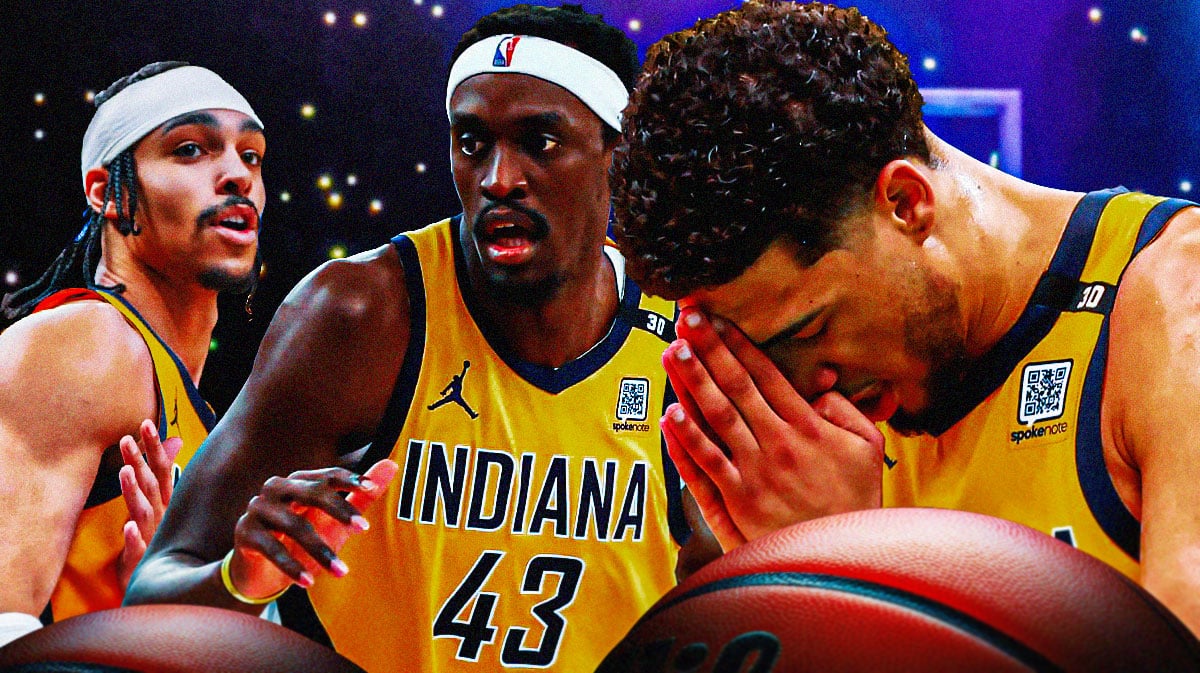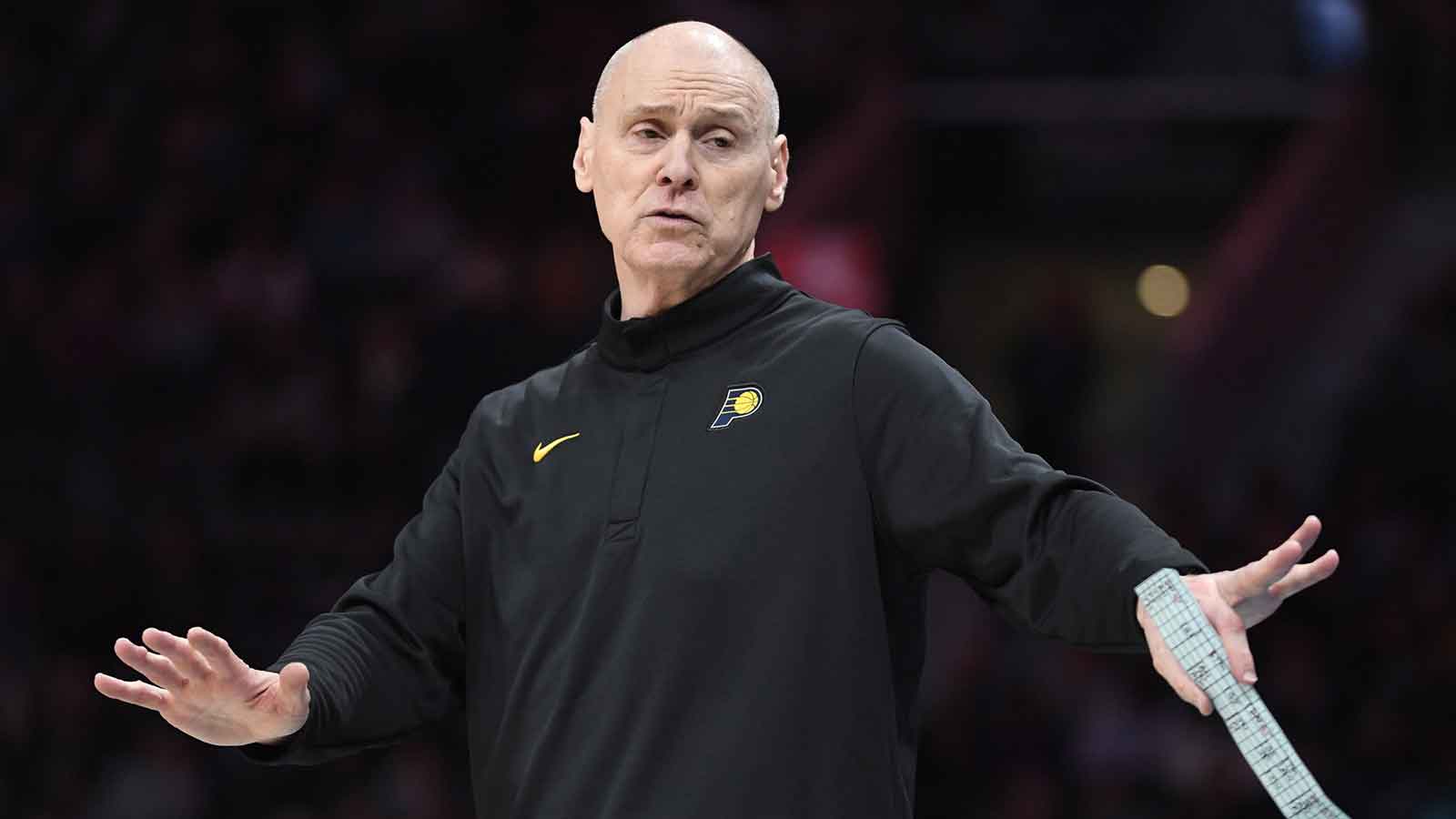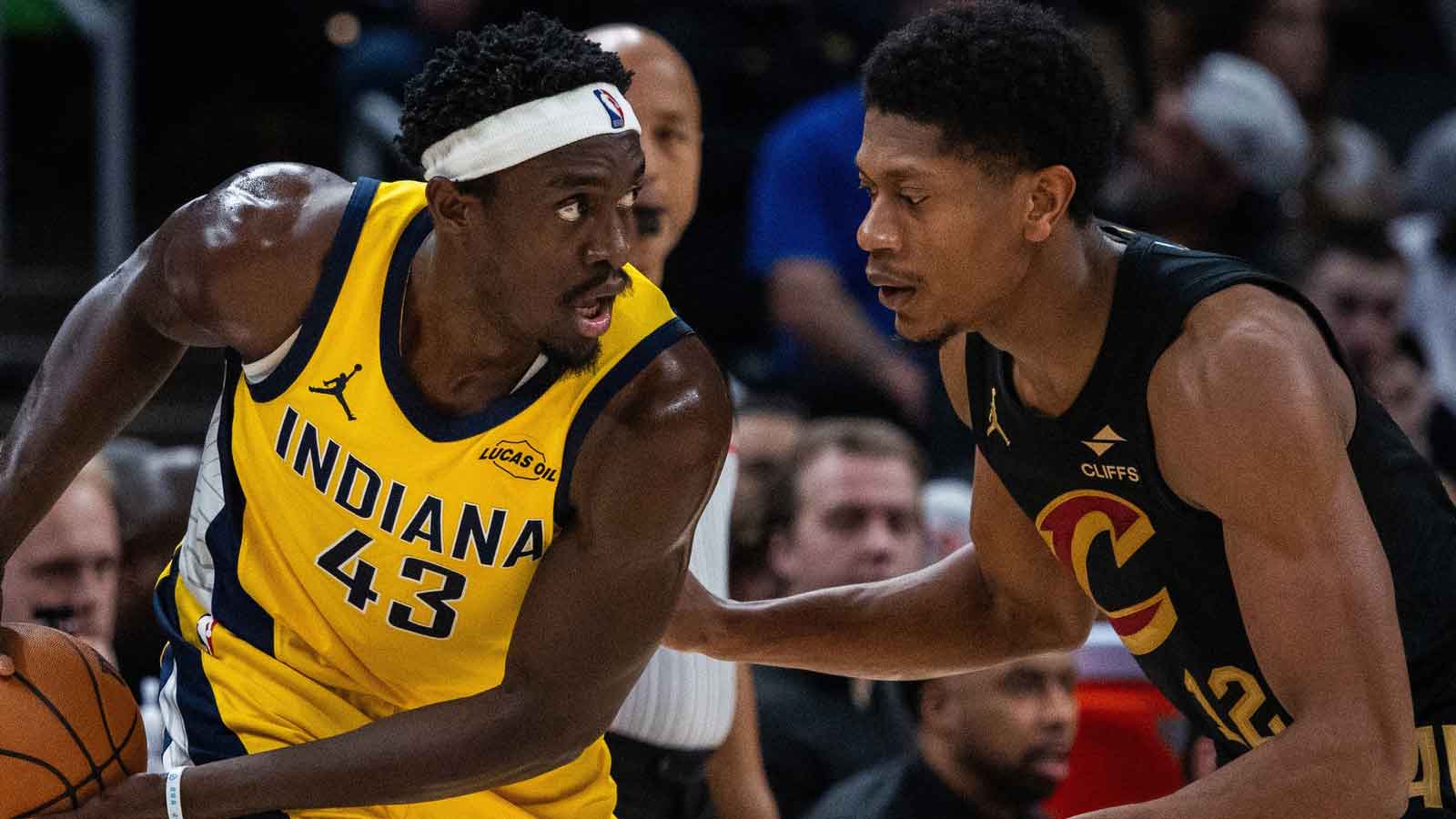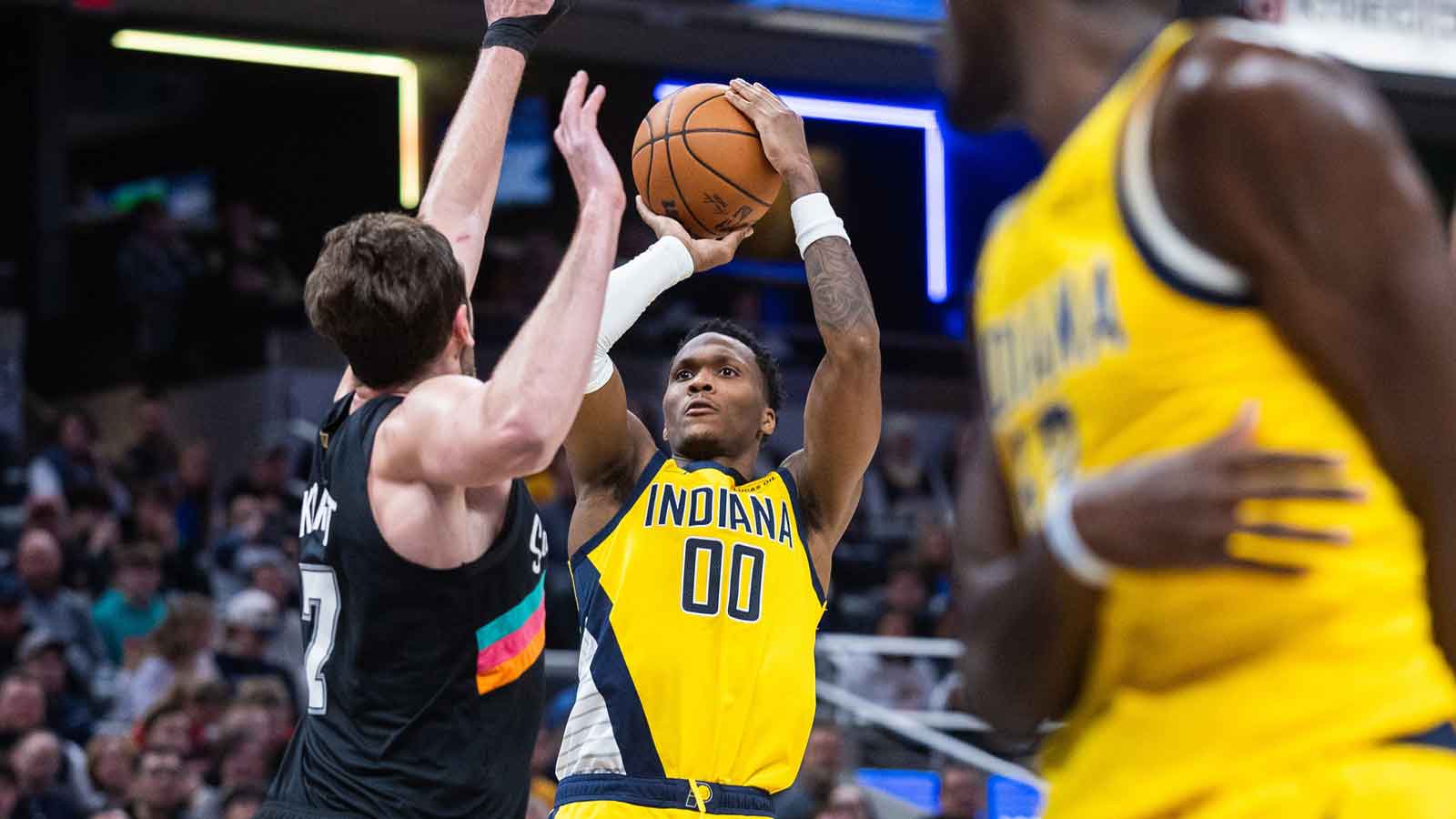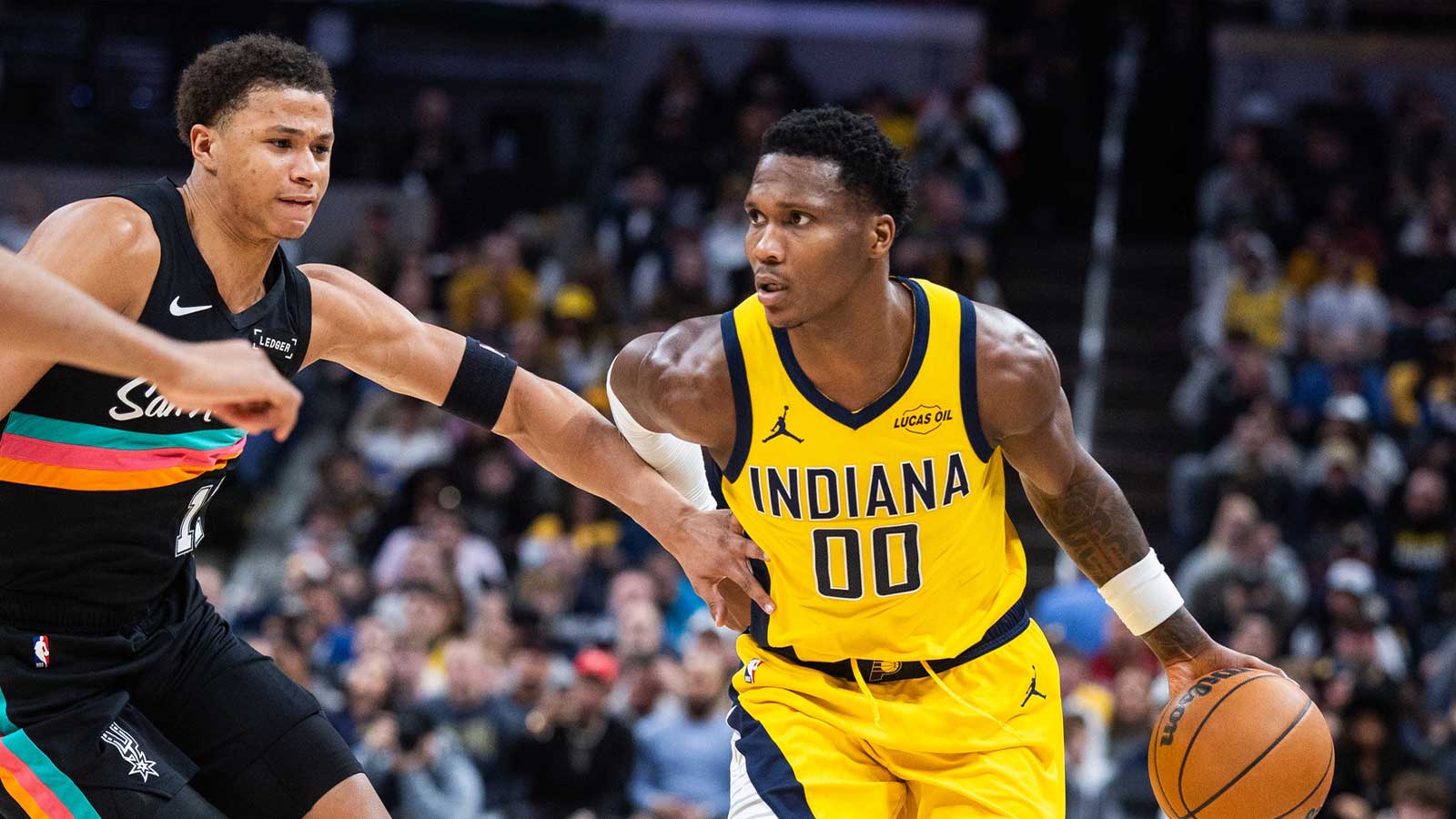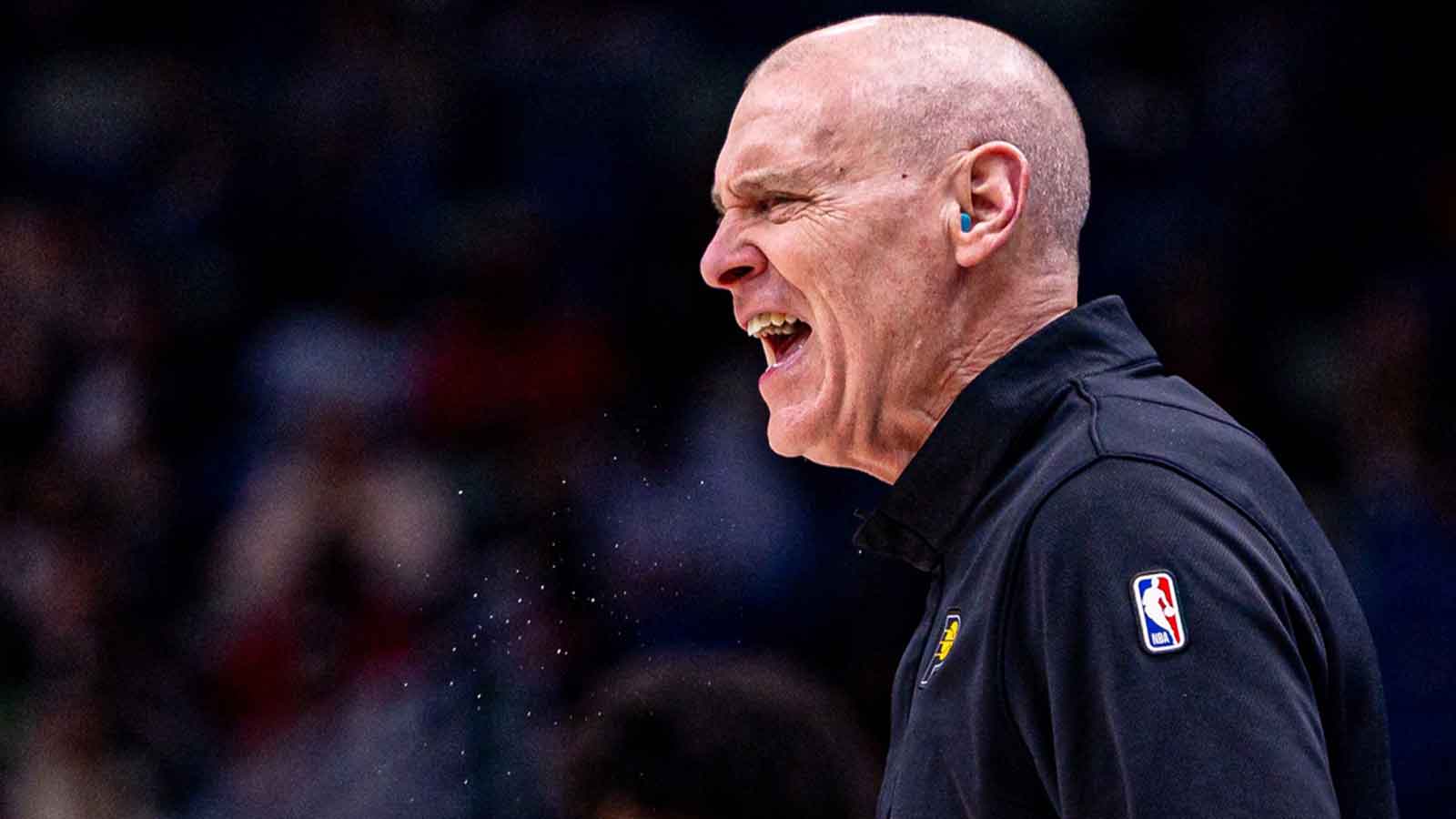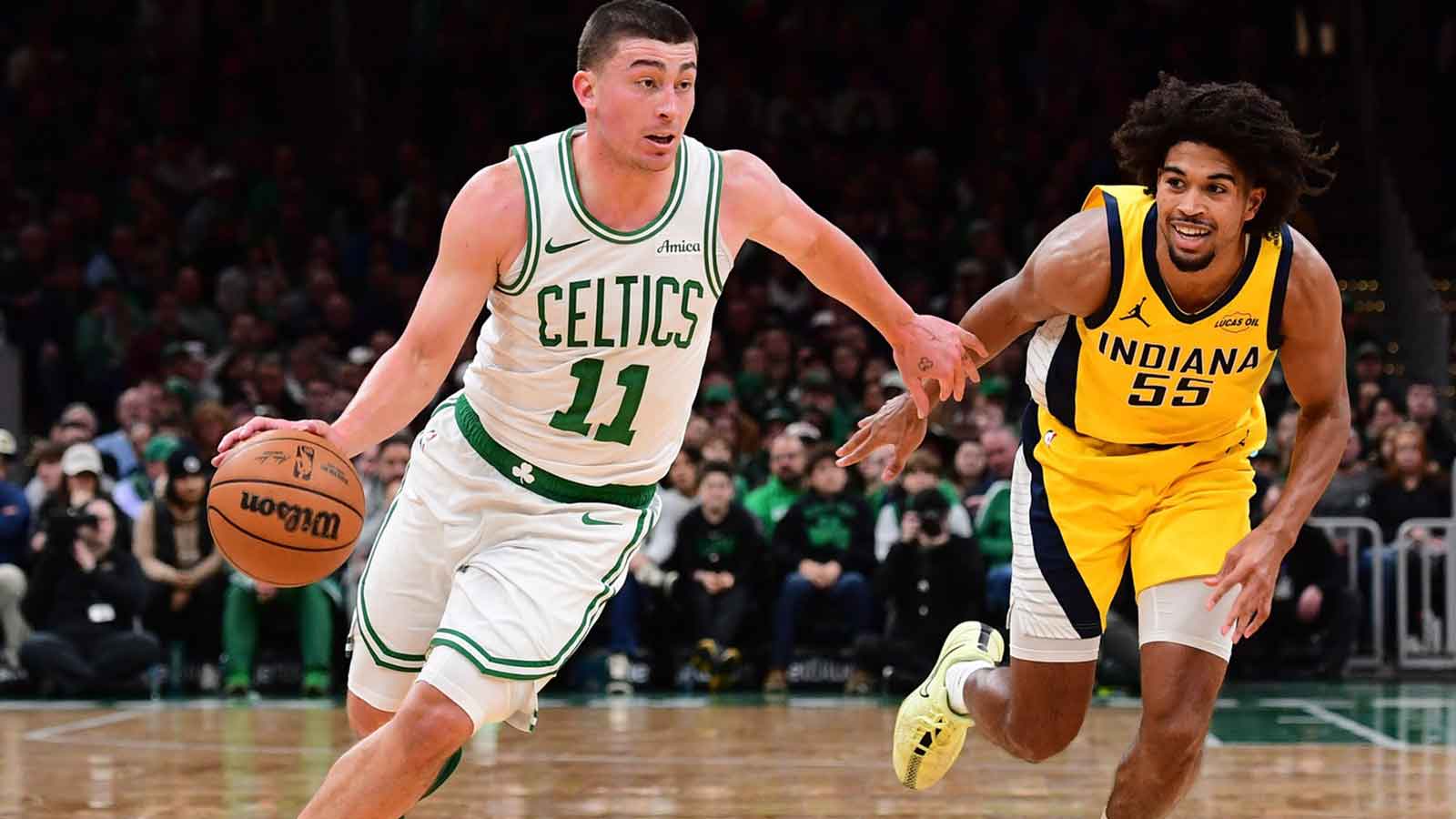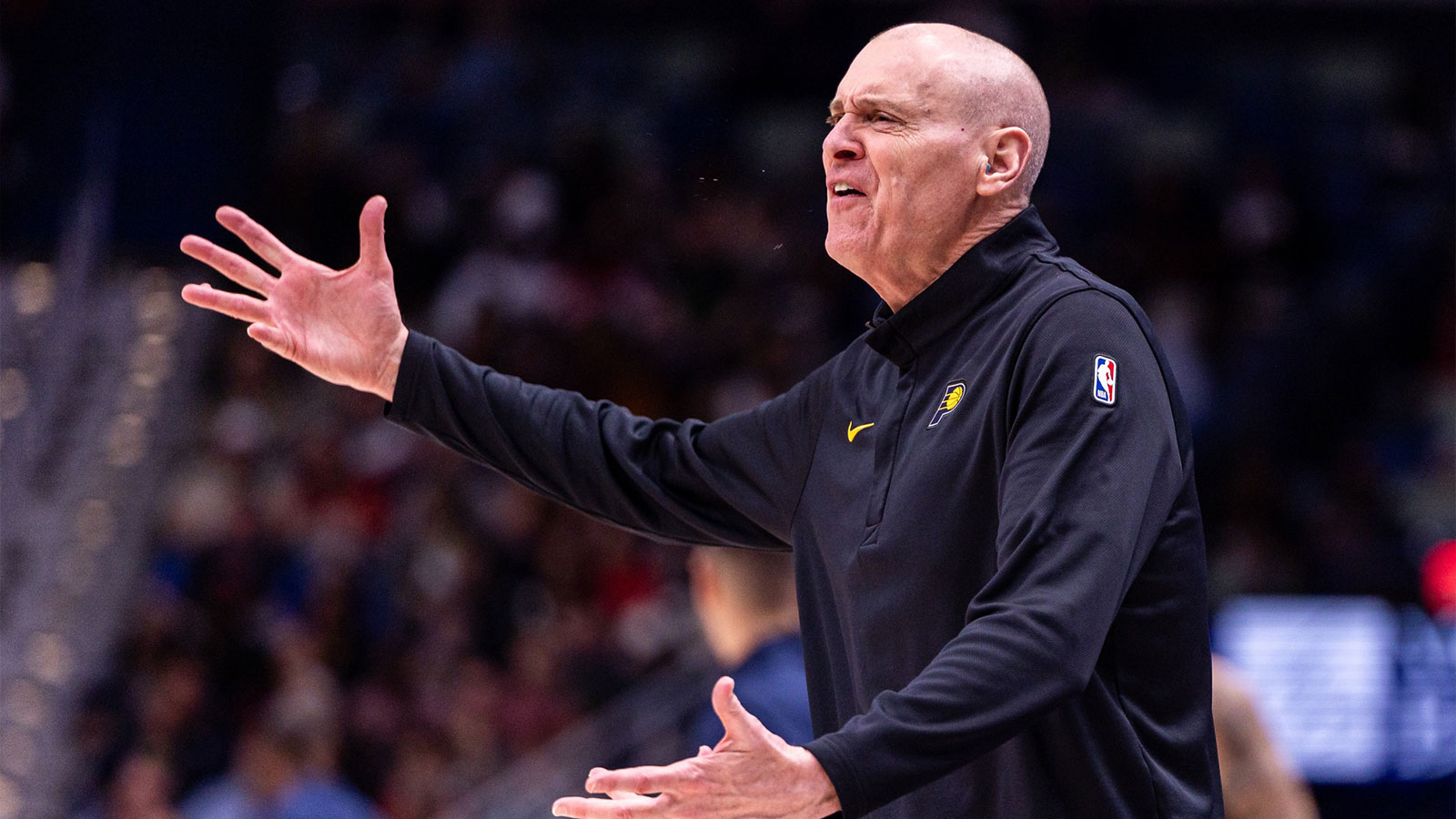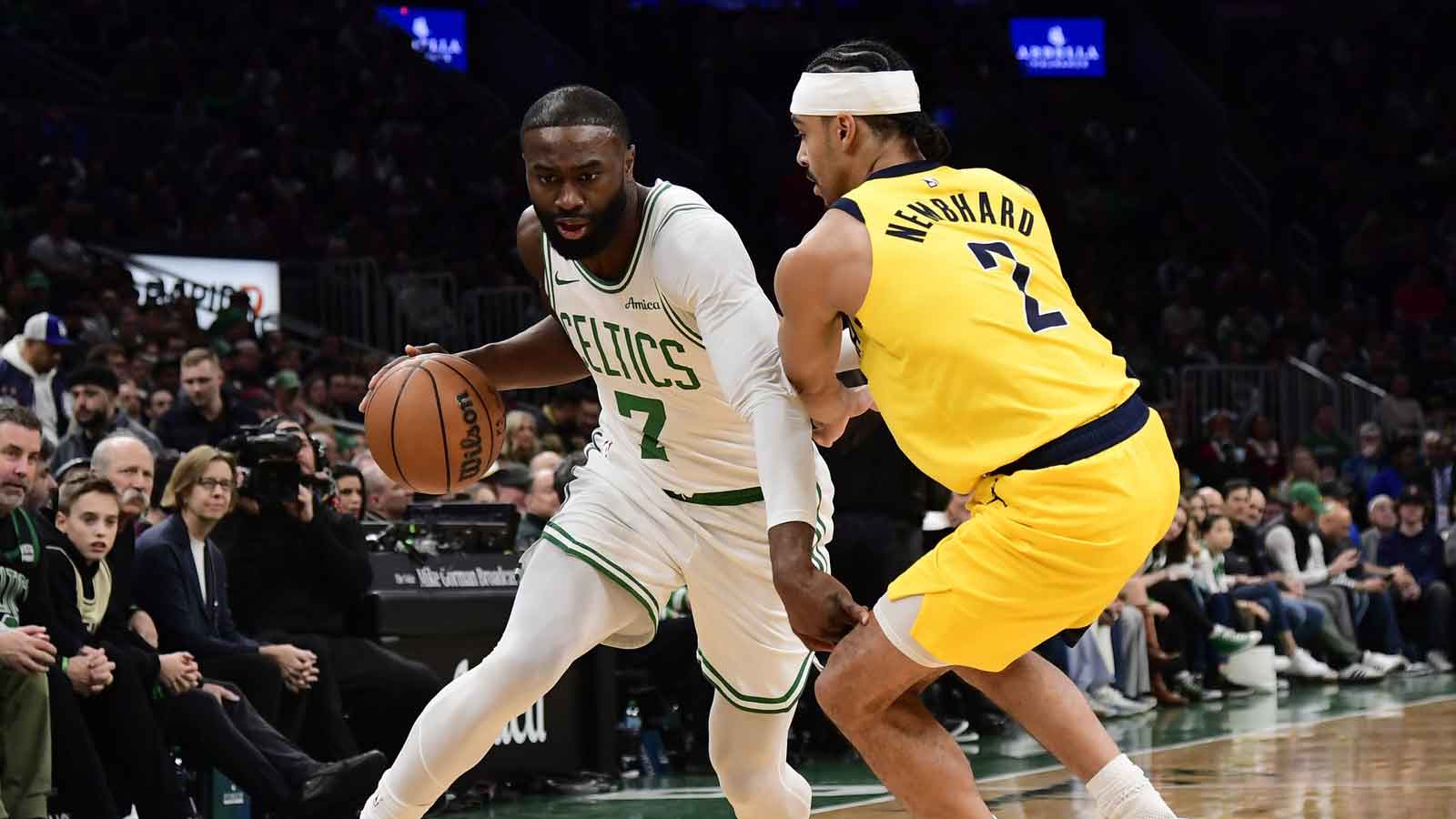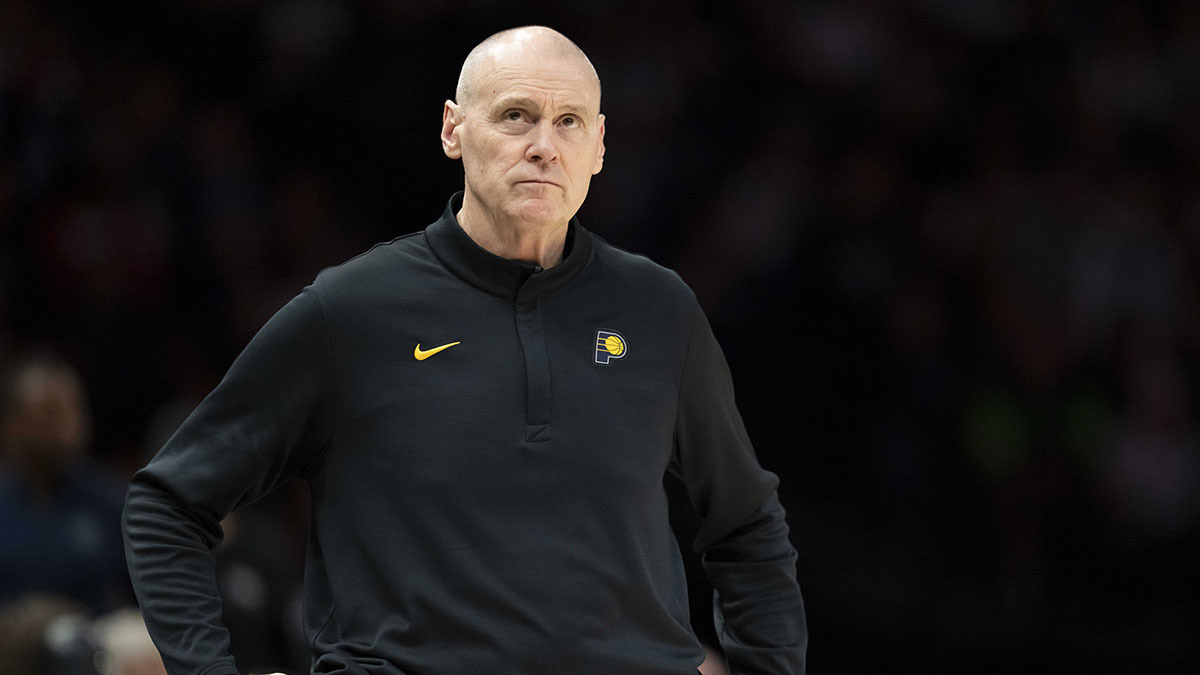The Indiana Pacers basically had the game won when they secured a defensive rebound with around 12 seconds left in Game 1 of their Eastern Conference Finals matchup against the Boston Celtics. The Pacers were up by three, 117-114, and had possession with less than 10 seconds remaining in regulation. Alas, the Pacers threw it all away.
Instead of going up 1-0 in the series and cementing themselves as a legitimate threat to a Celtics team that has had a cakewalk of a postseason run to this point, the Pacers find themselves on the losing end after suffering a 133-128 defeat in overtime. The Pacers' meltdown on Tuesday required a comedy of errors, and that's exactly what they were guilty of.
For this exercise, we'll be examining just how detrimental each Pacers gaffe actually was, and we'll be ranking just how devastating each was in the grand scheme of their Game 1 loss to the Celtics.
7. Tyrese Haliburton's fourth quarter turnover with 27 seconds to go (117-114, IND)
Pacers win probability declines by 5.1 percent (per Inpredictable)
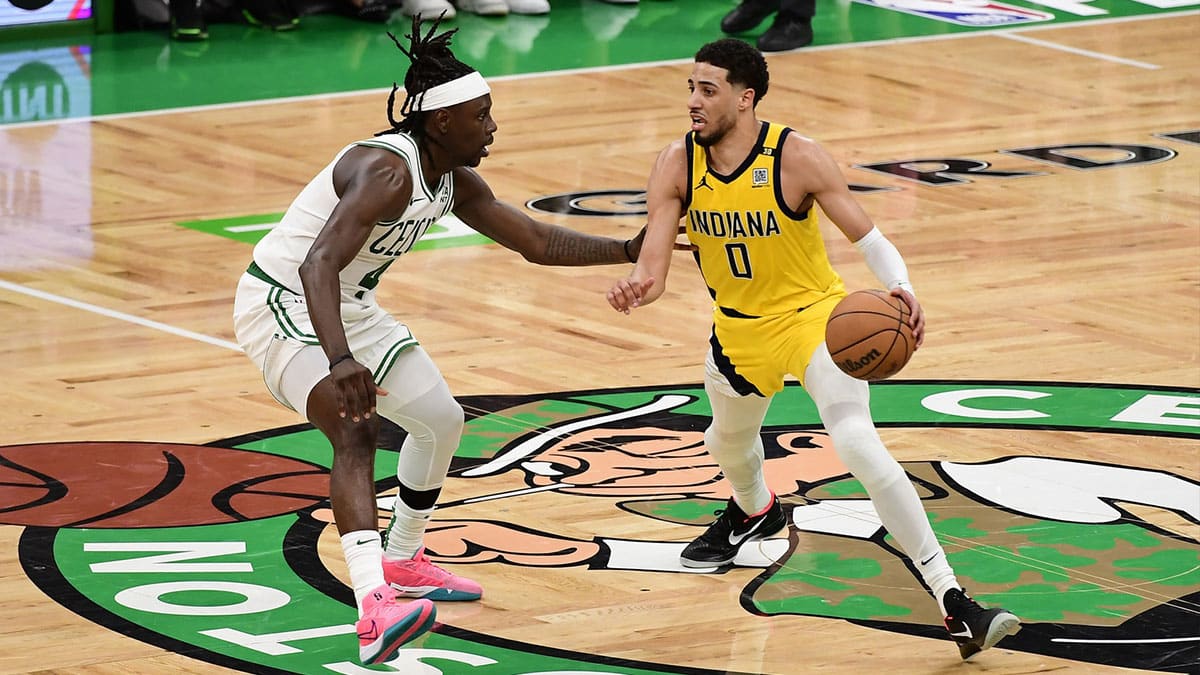
The Pacers were very fortunate that with 36 seconds left on the game clock, Jayson Tatum misfired on a three-pointer that would have tied the game. The Celtics went two for one and created a good shot, but Tatum clanked his open three to put the Pacers in the driver's seat.
All the Pacers had to do was burn some clock and perhaps get a chance at extending the lead to a two-possession game to put the nail in the Celtics' Game 1 coffin. Instead, Tyrese Haliburton bobbled the basketball, losing it along the sideline.
The saving grace of this Haliburton turnover was that the Pacers were able to put up a resolute defensive stand on the subsequent possession. Derrick White may have gotten a step on Nesmith, but White blew the layup. And even though the Celtics managed to corral the offensive rebound, Jayson Tatum ended up missing on a fadeaway two-pointer that would have made him the subject of vitriol had they gone on to lose the game.
The Pacers' win probability jumped up by 7.9 percent after Tatum was forced to foul Myles Turner to play the clock management game. So in the end, as frustrating as this Tyrese Haliburton turnover may be, it's not like this was their most backbreaking gaffe.
6. Pascal Siakam coughs up the ball on a spin move, 37.1 in OT (127-123 BOS)
Pacers win probability declines by 3.8 percent
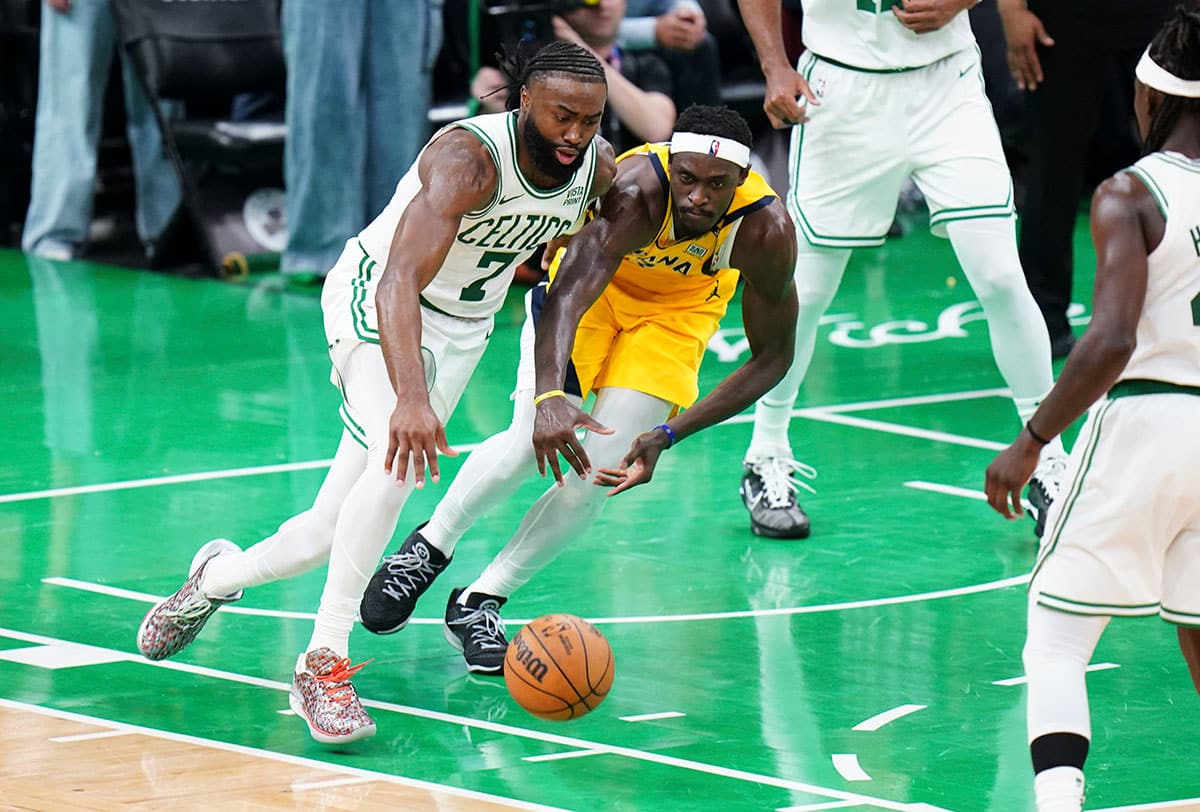
Pascal Siakam had himself a solid Game 1. But he wasn't much of a factor for the Pacers late in the fourth quarter and in overtime. The Pacers, however, looked towards Siakam to get them a quick bucket to trim the lead to two on a two for one opportunity. However, Siakam was unable to shake Jaylen Brown off. Brown corraled the ball that came loose from Siakam's grasp, essentially ending the game.
Brown came up huge with multiple defensive stops for the Celtics, and this was one of them. It would have been more backbreaking for the Pacers if the game was closer at this point, but climbing back from a four-point deficit with around 30 seconds left was always going to be difficult.
5. The Pacers' star guard hoists a difficult look at the buzzer, 0:01 in 4Q (117-117)
Pacers win probability declines by 10.4 percent
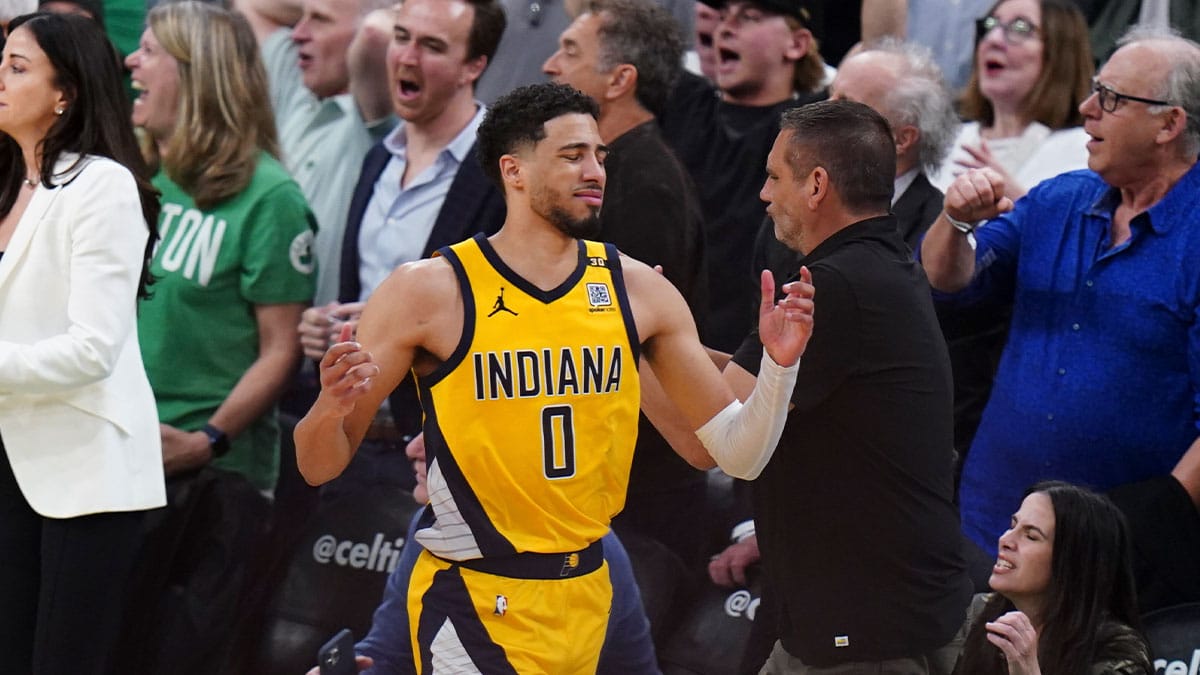
Tyrese Haliburton has run into some trouble this postseason when it comes to creating open looks for himself. He is a pull-up artist, but there are times when he doesn't have the quick first step to shake off his defender. The Pacers have adjusted by utilizing him more off the ball.
But with the game tied in the dying embers of regulation, Haliburton found himself open from three; however, the problem was that he was open from multiple feet beyond the arc. Nonetheless, Haliburton certainly had the range to give the Pacers a chance if he pulled up from that deep. Instead, he chose to come closer, attracting the help of Jayson Tatum, and then Tatum promptly clamped him to prevent a repeat of the bonkers three Haliburton hit to end the third quarter.
4. TJ McConnell's foul on Jayson Tatum and-one, 1:12 in OT (124-123 BOS)
Pacers win probability declines by 15.6 percent
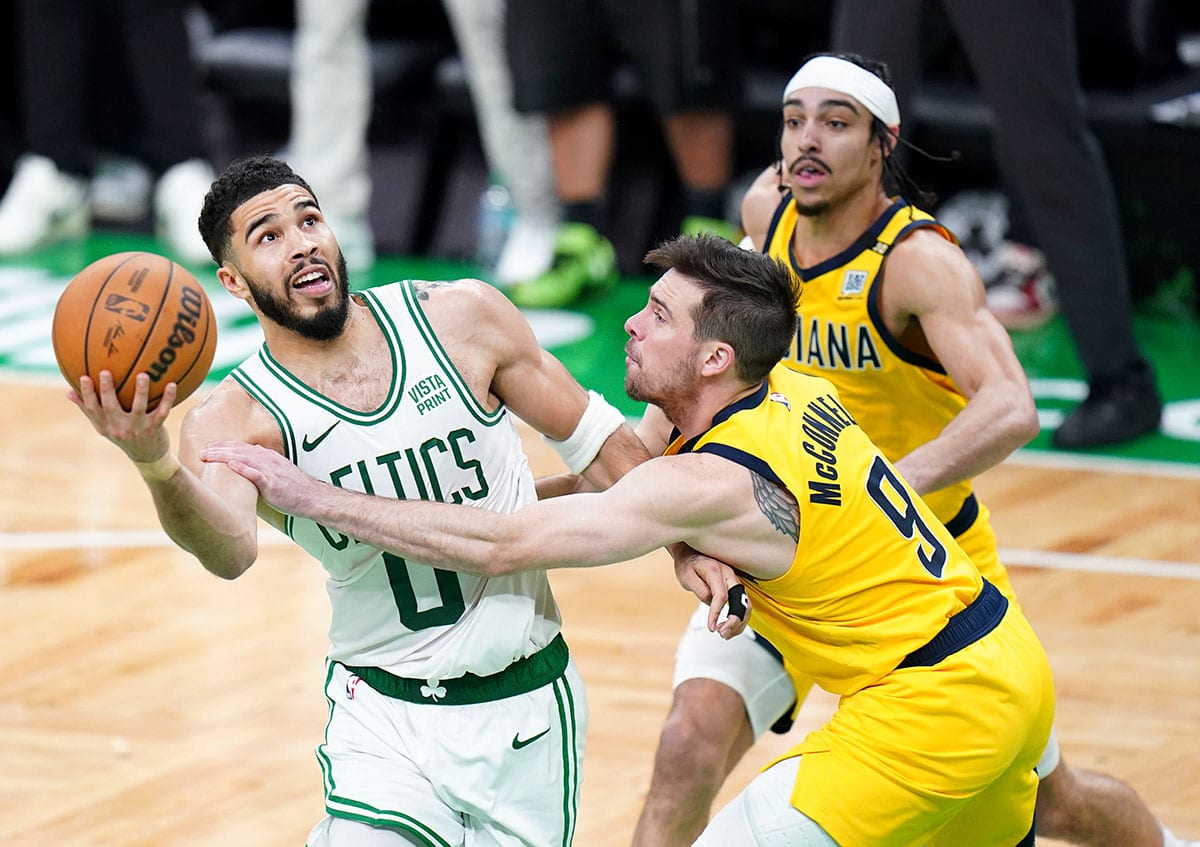
One underrated subplot in overtime of Game 1 was that Aaron Nesmith fouled out with 3:09 remaining. This forced TJ McConnell back into the game, which isn't exactly a bad thing. But the Pacers had to field a lineup of three guards; the onus to guard Jayson Tatum then fell on Andrew Nembhard's shoulders.
Tatum was aggressive in trying to post up Nembhard, and with a little over a minute to go in OT, the Celtics star was able to shake off his defender, with Nembhard even falling to the ground. This then forced TJ McConnell to be the last line of defense due to the Celtics' spacing. McConnell could do nothing to contest Tatum at the rim. But the Pacers guard compounded matters by hacking Tatum softly, allowing him to make an and-one layup to give the Celtics the lead.
The smart play would have been for McConnell to just let Tatum score. Instead, the Celtics took the lead for good. But it's hard to blame McConnell too much for this, as the Pacers are running into a bit of personnel issue where they lack viable wings outside of Nesmith and perhaps Ben Sheppard to deal with the Celtics' stars.
3. Haliburton turns the ball over again, 1:02 in 4Q (124-123 BOS)
Pacers win probability declines by 16.0 percent
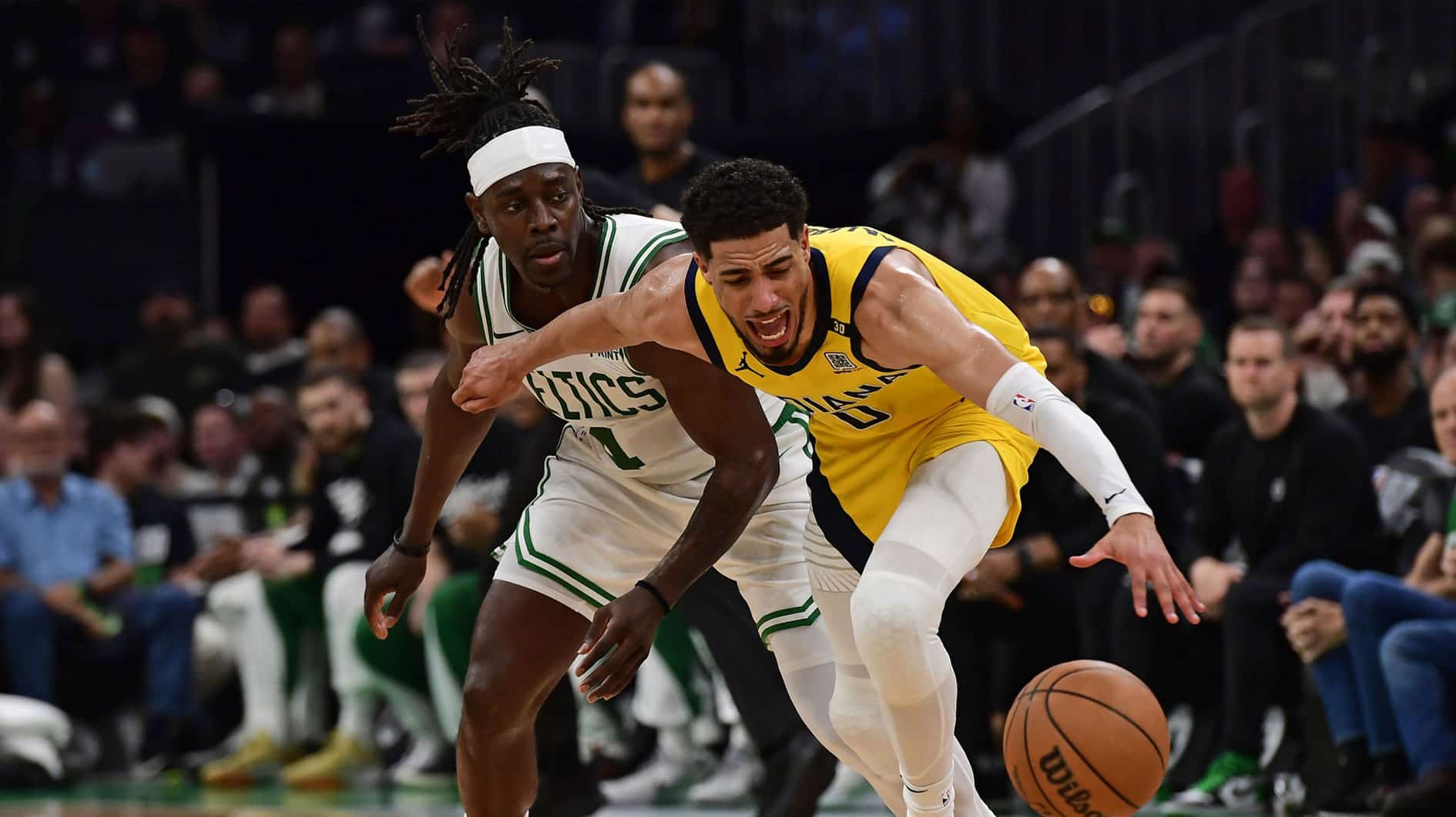
The Pacers have taken plenty of haymakers from the Celtics in Game 1, only for them to come back with uppercuts of their own. After the crucial Tatum and-one, the Pacers were only down by one. Their offense has been on point for most of the night, so they had a good chance to regain the lead.
Instead, they didn't even get a shot away. Jrue Holiday smothered Tyrese Haliburton, forcing him to fumble the ball out of bounds. This then led to the Tatum triple that gave the Celtics a four-point lead (this slashed the Pacers' win probability by 20.4 percent).
Haliburton, as the best player of this up-and-coming Pacers team, has to be better moving forward.
2. Siakam loses track of Jaylen Brown, 0:06 in 4Q (117-117)
Pacers win probability declines by 33.4 percent
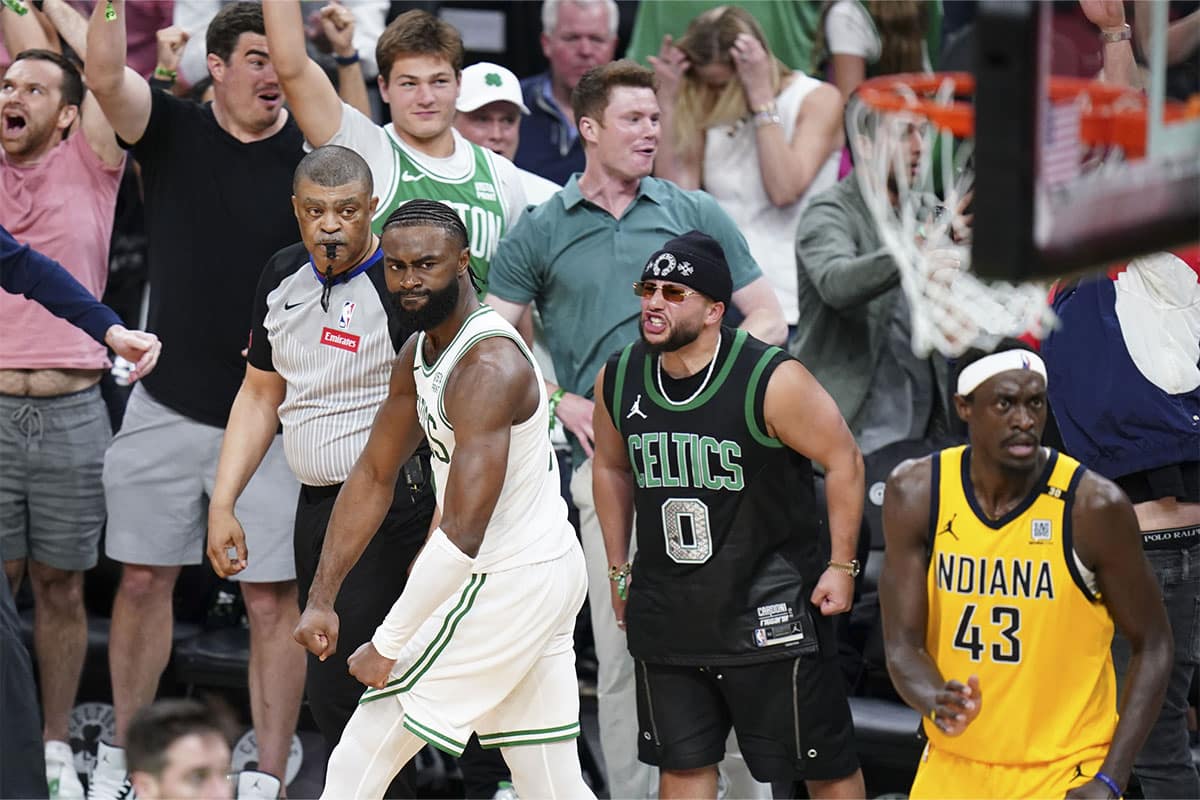
The discussion surrounding the Pacers' inexplicable Game 1 loss has mostly revolved around whether or not it's the best idea to foul when up by three. However, the Pacers didn't exactly give themselves a chance to foul. Thanks to a solid screen from Derrick White, Jaylen Brown was able to catch the ball cleanly on the left corner. This allowed Brown to set his feet for a good look at a game-tying triple, which he promptly made.
Now, it's unclear if the strategy for the Pacers was to go over screens. Andrew Nembhard did not show any indication that he was willing to switch. But still, Siakam was a step too late on the play. He was scrambling to chase the Celtics star, which meant that he had to contort his body to avoid fouling on a three-point attempt.
One would think that the Pacers would be more attuned to guarding the three-point line while protecting a three-point lead. The typical coverage these days that teams deploy is a switch all scheme to prevent anyone from getting up a good look from deep. But the Pacers' defense, which has put up a much better stand than their track record would indicate, faltered at the worst possible time.
1. Andrew Nembhard throws the ball away, 0:08 in 4Q (117-114, IND)
Pacers win probability declines by 5.2 percent
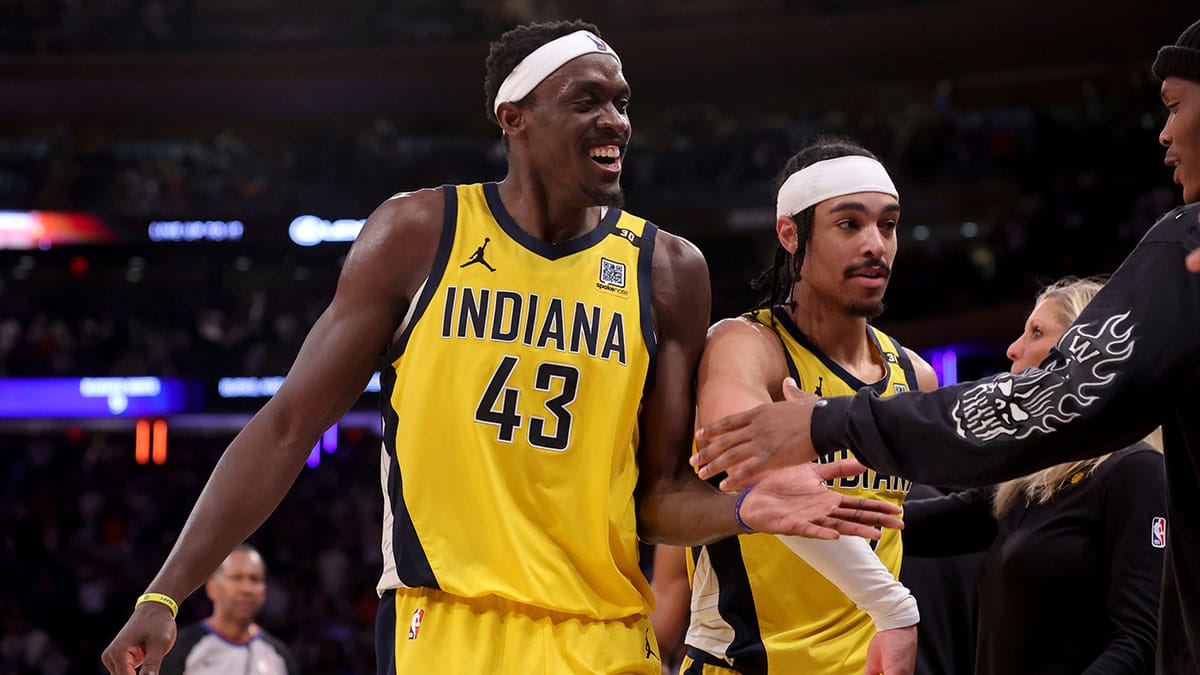
That 5.2 percent decline in win probability does not fully capture how heartbreaking this play was for the Pacers. They put up two defensive stops in a row, and all they needed to do was make two free throws to seal the game for good. They did not even have to inbound from the backcourt; Rick Carlisle even admitted that he should have taken a timeout so they could use the entire court to get the ball in, draw some free throws, and ice the game.
But then there's Andrew Nembhard and Pascal Siakam's decision-making. One of the worst things a team can do is to throw the ball towards the opposing basket in this sort of scenario. Throwing it towards the baseline might be worse. But that's exactly what the Pacers did. If Nembhard was having such difficulty in getting the ball in, could he not have taken a timeout?
This was the play where the Pacers had the most options to seal the deal. But they let it slip away from their fingertips — literally — with an error of this magnitude.

